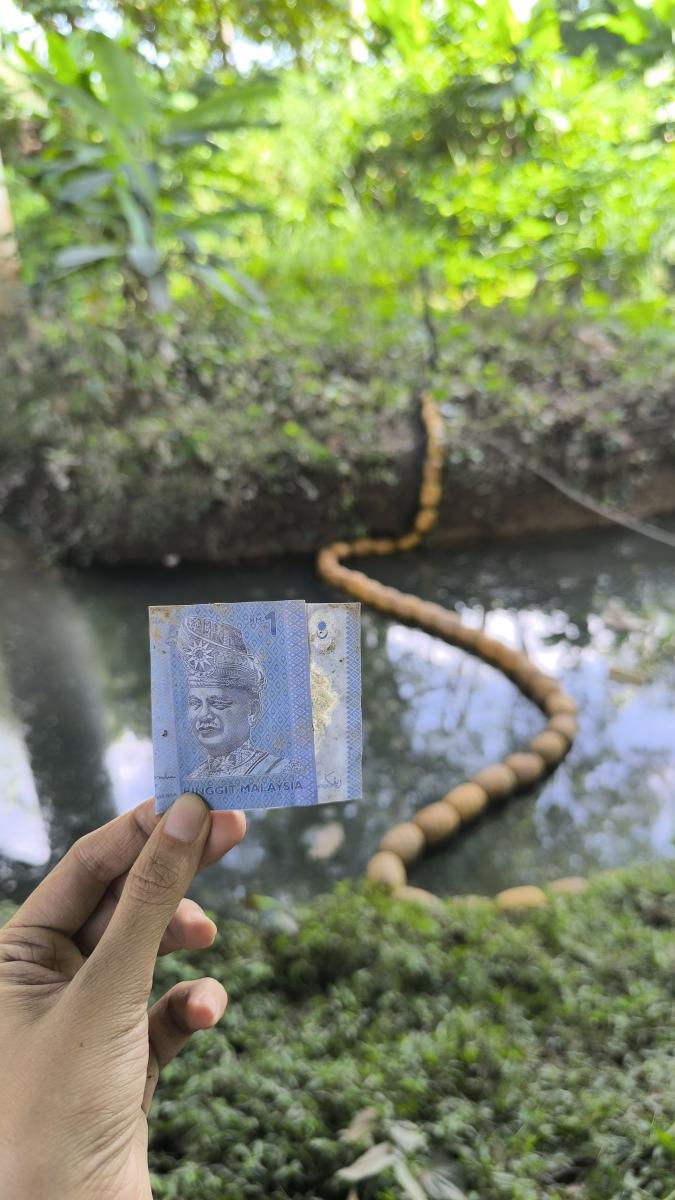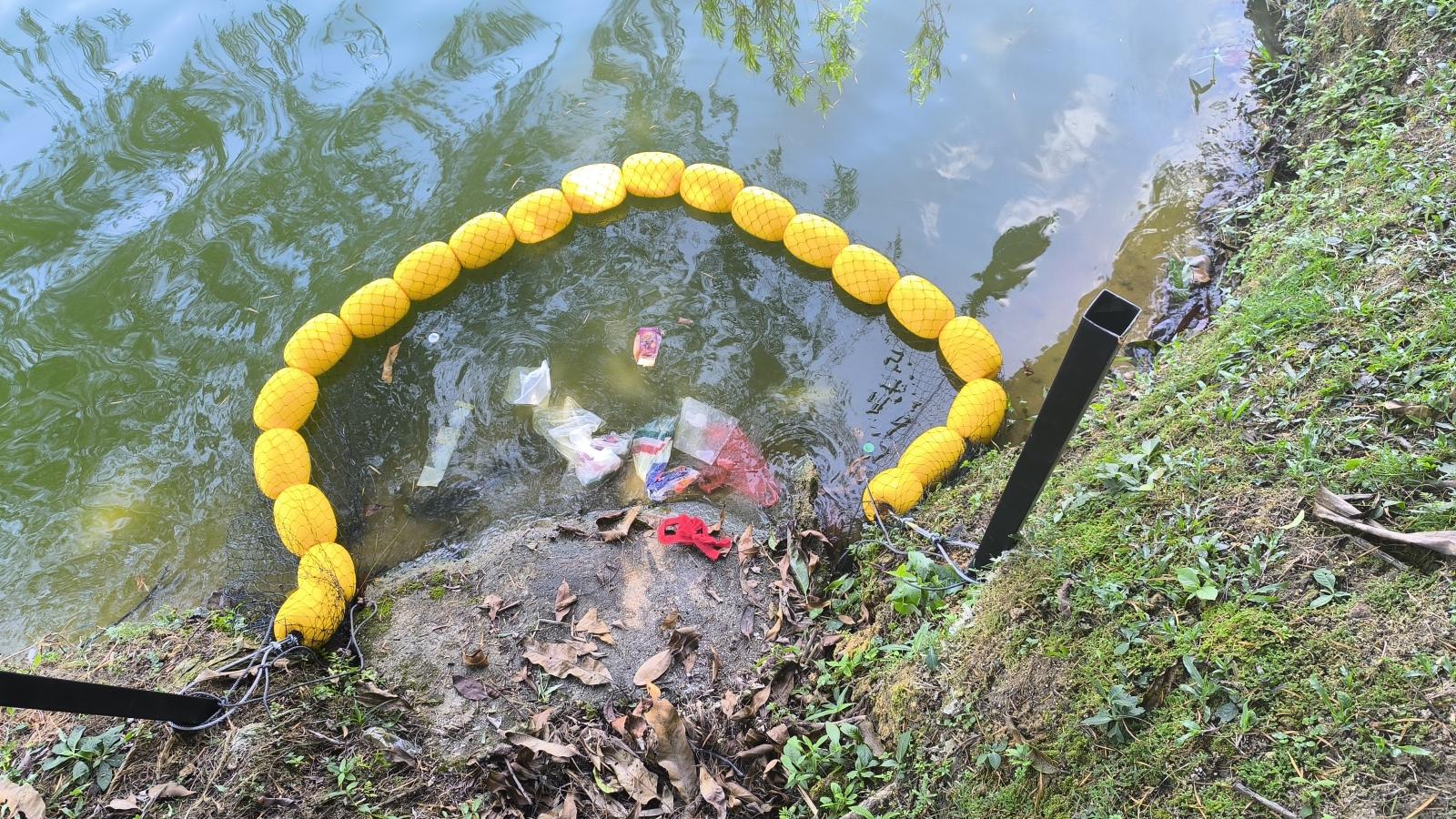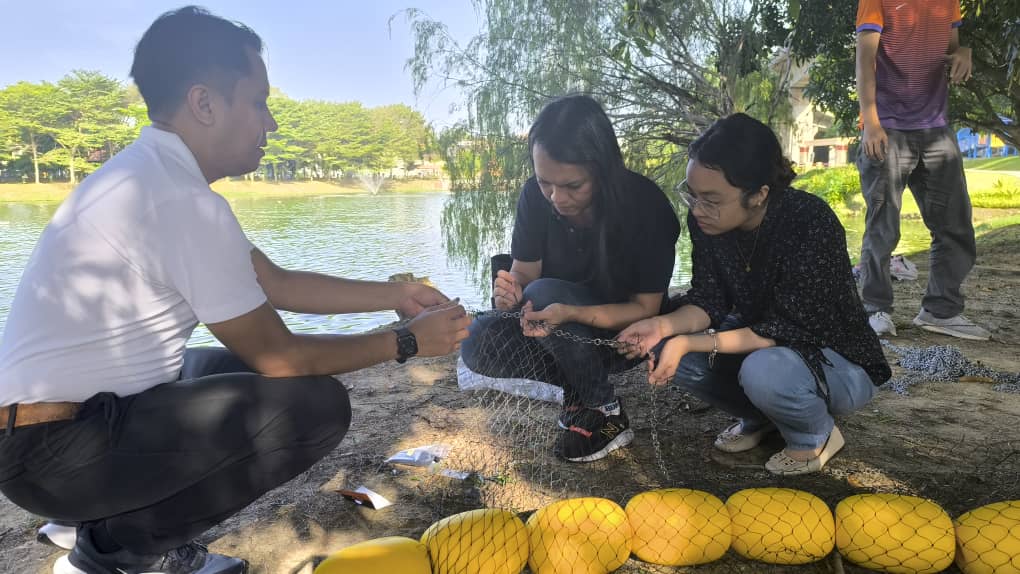.jpg)
Researchers from Universiti Malaya and Monash University installed Sampah Snagger 002 at Taman Aman in Petaling Jaya.
On July 24th, 2024, Universiti Malaya (UM) spearheaded a significant environmental initiative at Taman Aman, in collaboration with Monash University and funded by the Petaling Jaya City Council (MBPJ). This initiative falls under the PJ S.E.E.D 5.0 project (Social, Environment, Economy, Development), aimed at enhancing sustainable water systems and bolstering ecosystem resilience in the region.
Central to this endeavor was the installation of a Sampah Snagger 002, a critical step towards mitigating water pollution and promoting sustainable water management practices.
Over the years, Taman Aman Lake in Section 22, Petaling Jaya, Selangor, once a vibrant recreational hub, has suffered from deteriorating water quality issues. Pollution has led to the uncontrolled growth of aquatic plants and algae blooms, transforming the once-clear waters into a murky green, negatively impacting aquatic life and overall ecological health. The Sampah Snagger 001 by Sekitar Kita was initially installed at a stream within Universiti Malaya with the assistance of 12 UM students.

The first Sampah Snagger at Universiti Malaya, where even a RM1 note was found during device maintenance.
This innovative device, constructed from nets and buoys strategically anchored to poles along the riverbanks, functions as a barrier to effectively capture floating debris moving downstream. Its primary objective is to combat the adverse effects of microplastics and toxic algae on local aquatic ecosystems and public health.

Testing the functionality of the Sampah Snagger 002 at Taman Aman, Petaling Jaya in trapping floating debris. The team will regularly maintain the device and remove the collected debris on a weekly basis.
Regular maintenance of the Sampah Snagger is crucial, weekly inspections and clean-ups due to varying environmental conditions and the intensity of garbage flow. This proactive maintenance schedule ensures that collected litter is promptly removed, disposed of responsibly, or recycled. By reducing the volume of pollutants in the water, this initiative not only contributes to cleaner river ecosystems but also alleviates the financial burden on local governments tasked with waterway clean-up efforts. These cost-saving measures can be reinvested into broader efforts aimed at improving water quality and infrastructure across Selangor, aligning with the objectives outlined in the United Nations Sustainable Development Goal 6 (SDG 6) for clean water and sanitation. The ongoing Selangor water crisis underscores the urgency of implementing such sustainable solutions to safeguard water resources and promote a resilient water future for the region.

The Sampah Snagger can be easily assembled on-site.
In conclusion, through collaborative efforts like the PJ S.E.E.D 5.0 project and the installation of innovative solutions such as the Sampah Snagger, Universiti Malaya (UM) , Monash University, and MBPJ are paving the way for sustainable environmental practices in Selangor. These initiatives serve as a testament to the importance of proactive environmental stewardship and collective action in addressing pressing water quality issues facing urban areas today.